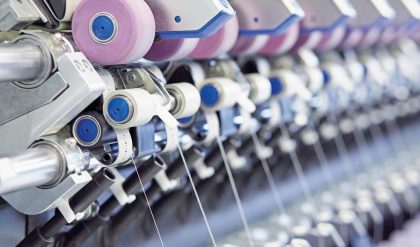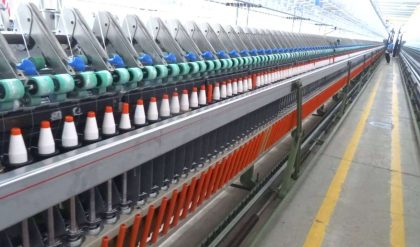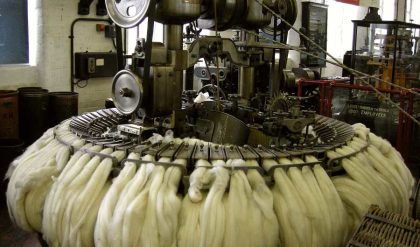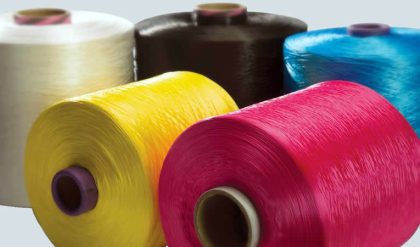Properties of cotton :
Fiber length and its uniformity: These parameters play critical role in deciding the combing performance. If the fibre has high short fibre content, then the improvement in the yarn quality becomes significant only on removal of high amount of noil, which will in turn increase the material cost
Fibre stiffness: If the fibre stiffness is high, there is good chance of fibre breakage during the combing operation as the fibres have to go through lot of bending during the combing operation.
Moisture content: High moisture content is the fibres make the combing operation difficult since the fibres tend to cling to each other making the passage of the combing needles between the fibres rather difficult leading to improper combing and high fibre breakage. If the moisture content is less and the fibres are dry, then the fibres do not move smoothly from one component to another and they tend to fly.
Fiber fineness: The combing machine parameters like the speeds and settings will be influenced by the micronaire value of the cotton being processed. In case of finer fibres, the total number of fibres in a unit length of the lap of given linear density will be much higher than that for coarser fibres. The finer fibres are also delicate. Hence, the combing machine parameters need to be selected appropriately.
Foreign material associated with the fibers: The foreign materials and larger trash particles should have been already removed from the fibers at the carding stage itself. If larger trash particles and metallic particles are still left in the feed lap, they can cause damage to the combing needles.
Material preparation :
Fiber parallelization: The condition of fibres in terms of orientation and parallelization as they are feed to the combing head is a very critical parameter which decides the combing performance. If the fibres are more parallel and oriented parallel to the length of the lap, it is better in terms of combing performance. This will be discussed in more details in the lecture on the Lap preparation.
Sheet thickness: The thickness of the lap is important in the sense that the combing needles should be able to penetrate into the thickness of the lap. If the lap is too thick, the fibres present at the bottom of the lap will not get combed properly. This will also put too much stress on the combing needles. If the lap is too thin, then the production rate will suffer.
Sheet evenness: The lap should be even across the width as well as along the length. If it is not even across the width, then the lap is not going to be held tightly at places across the width, which will result in pulling out of the fibres in lumps and good fibres may end up in going with the noil. This again will be discussed during the lecture on lap preparation.
Orientation of the hooks: Combing operation removes the leading hooks present in the feed lap preferentially.
Factors associated with the Machine :
Condition of combs: The combing cylinder needles are the key elements responsible for proper combing. The condition of the combs like the sharpness of the needles, arrangement of the needles and the density of the needles play important role in deciding combing performance. The details will be discussed in one of the following lectures.
Speeds: The industry always want to go for higher production rates with improved quality of the combed slivers. Hence one would like to go for higher speeds for all moving components. In combing machine, the speed is denoted as “nips/minute”, which is nothing but the rotational rate of the main combing cylinder. For every rotation of the main combing cylinder, one cycle of combing comprising feeding, combing, detaching and top comb operation are completed. There has been continuous increase in the combing speeds associated with improvement in quality as well. Although the principle of combing has not changed over a period of time, increase in speeds became possible because of the improvement in machinery manufacturing technology, more accurately manufactured components with improved designs and better electronic sensors and controls. Generally for a given machinery conditions, the quality of the combed sliver will go down if the combing speed is increased.
Operation of combs: The timing of operations of all combing elements is a crucial factor. The timing of comb and the depth of penetration of the combs into the lap need to be accurately set for best possible combing.
Type of sliver forming element: Operations of condensing the combed web emerging out of the detaching rollers, combining the slivers for the drafting, drafting and packing of the drawn slivers should not introduce additional irregularities in the sliver. Most of the combing machines use asymmetric web condensation to reduce the short term irregularities in the slivers.
Drafting arrangement: The combing process introduces an additional irregularity known as piecing irregularity. Hence, all the combing machines are fitted with a roller drafting system. The roller arrangement, diameter of the drafting rollers, hardness of the top roller cots and drafting elements need to be appropriately selected to have proper drafting of the combed material.
Settings: Accuracy of settings is key element in good combing performance at high speeds. The following settings usually have high impact on the quality of combing:





